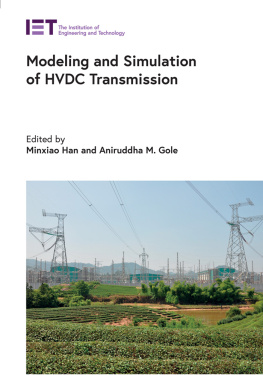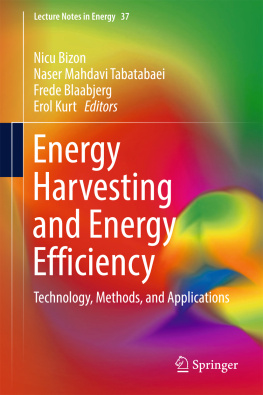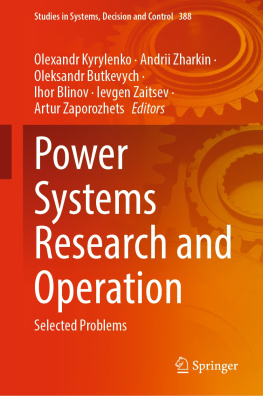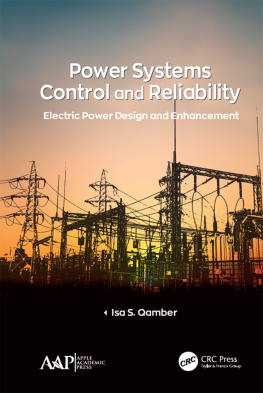Springer Nature Singapore Pte Ltd. 2018
Tharangika Bambaravanage , Asanka Rodrigo and Sisil Kumarawadu Modeling, Simulation, and Control of a Medium-Scale Power System Power Systems
1. Introduction
Both electric utilities and electricity consumers are becoming increasingly concerned about the quality and reliability of electric power while having a healthy (stable) power system.
Newer-generation load equipment, with microprocessor-based controls and power electronic devices, is more sensitive to power quality variations than the equipment used in the past.
The increasing emphasis on overall power system efficiency has resulted in continued growth in the application of devices such as high-efficiency, adjustable-speed motor drives and shunt capacitors for power factor correction to reduce losses.
Consumers have an increased awareness of power quality and reliability issues. They are becoming better informed about such issues as interruptions, sags, and switching transients.
Many things are interconnected in a network. Hence a failure of any component in the integrated processes or system, can have a considerable impact on the system itself [1].
As a developing country, still Sri Lanka possesses a small power system with an average maximum demand of 2100 MW that occurs around 8.30 p.m. As a result of the word wide development in the microprocessor-based controls and power electronic devices, information and communication technologies, the consumers also tend to go for/with them due to many reasons. As explained before, these equipment are more sensitive to power quality variations than the equipment used in the past. As examples:
A basic laptop computer (may be manufactured in China) can go out of order, if the supply power frequency is not within its rated limits. Since the users are usually office staff, university graduate and under graduate students, people in the research oriented disciplines, entrepreneurs etc., the outcome may be very bad.
Various production processes equipped with power electronic applications, may be affected very badly and can worsen this situation. As a solution the consumers can go for equipment such as voltage regulators etc. Due to very high production cost, price of their produce may not be in the affordable range. Therefore it has become a national requirement to facilitate the consumer with a quality and reliable electricity supply so that they can reduce their production cost. This paves the path to help the manufacturers and to develop the production and manufacturing sector in the country.
There is a trend to generate electricity based on non-conventional and renewable energy sources such as wind, bio-mass, solar power etc. Even though wind and solar are very good sources of energy, they are with high variability and uncertainty. Therefore the power system must be ready to accept electricity based on such sources, when it is available. This causes the system power to move both directions (forward and reverse).
Due to the continued push for increasing productivity, manufacturers want faster, more productive and more efficient machinery. To avoid such situations discussed above where the consumers can get disturbed very badly, the utilities/authorities should concern more about the quality and reliability of electric power. In other words, the economy of a country highly depends on the quality and reliability of that countrys electrical power system.
A mismatch between generation and demand can lead the power system unstable [2, 3]. This mismatch may be due to,
Sudden increase of generation than the loadif the power consumption is much less than the power generation, unless the Automatic Generation Control (AGC) System acts to rapidly reduce generation, there will be a critical situation which may even leads the system to a collapse of the entire generating system.
Sudden deficit of generation than the loadif the electricity consumption is much higher than the power generation, unless the AGC system acts fast and produce more electricity, there will be an emergency situation, and a failure is possible.
A disturbance (general) can be identified as: An undesired variable applied to a system that tends to affect adversely the value of a controlled variable [4]. It can be categorized into two major categories.
They are:
Load disturbances
Event disturbances
Faults on transmission lines due to equipment malfunctions or natural phenomena such as lightening.
Cascading events due to protective relay action following severe overloads or violation of operating limits.
Generation outages due to loss of synchronism or malfunction.
As explained in [4], load disturbances are a part of the system normal operating conditions. In an operating power system, frequency and voltage are always in a state of change due to load disturbances. Any departure from normal frequency and voltage, due to a load disturbance, is usually small and requires no explicit power plant or protective system response. Occasionally, however, major load disturbances which can be considered as event disturbances do occur. These may cause situations such as:
Generation deficit is one of the main issues that may occur in the power system of Sri Lanka. This can be identified as an event disturbance. Due to generation deficit, the most possible, significant and immediate outcomes are under-frequency situation and reduced-system-voltage situation. Effects of under-frequency on the power system in turn are undesirable. They are:
generators get over loaded
speed is below normal
cooling is below normal
system voltages are likely to be low
generator excitations get increased
increased possibility of thermal over-load of stator and rotor
These effects may lead the unit trip due to:
Further, due to short of generation in the power system, tripping of any unit can start a cascading of unit trips leading to a black-out condition. Even though a sufficient spin-reserve is available, if proper co-ordination is not there in the power system (such as AGC), still it can lead to a cascading of unit trips. An evidence for such a situation is a breakdown of a conductor in the switch-yard, in the Kelenitissa power station that led to a total collapse of the Sri Lanka power system in 2009.
Even though the fault is cleared the power system cant be brought back to normal quickly, rather the system should be brought to normal state integrating the total grid part by part. It is a process which consumes several hours to be back to normal [5]. Hence such situation can disturb the consumer in different ways. Due to loss of power,









